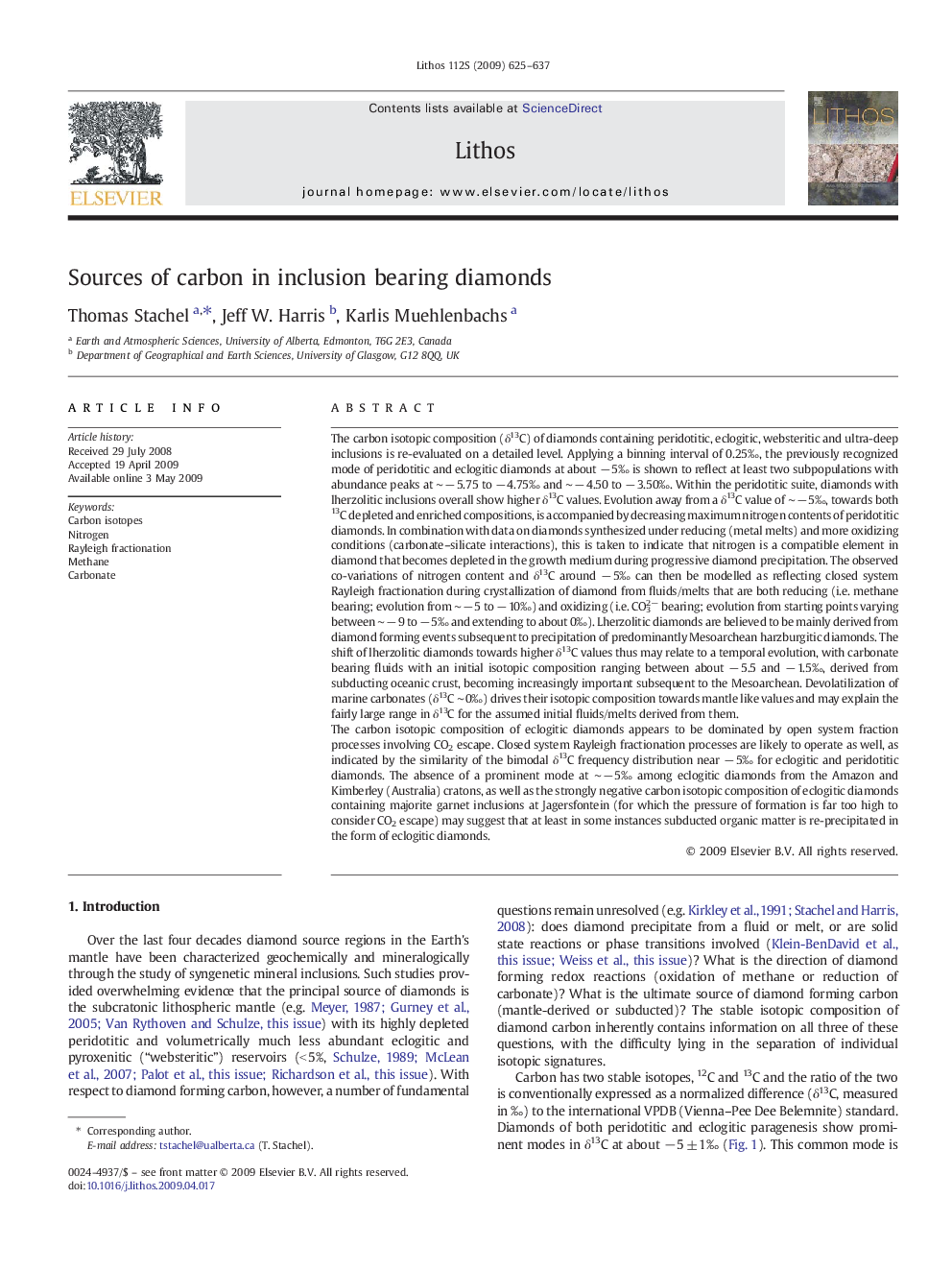| کد مقاله | کد نشریه | سال انتشار | مقاله انگلیسی | نسخه تمام متن |
|---|---|---|---|---|
| 4717175 | 1354428 | 2009 | 13 صفحه PDF | دانلود رایگان |

The carbon isotopic composition (δ13C) of diamonds containing peridotitic, eclogitic, websteritic and ultra-deep inclusions is re-evaluated on a detailed level. Applying a binning interval of 0.25‰, the previously recognized mode of peridotitic and eclogitic diamonds at about − 5‰ is shown to reflect at least two subpopulations with abundance peaks at ∼ − 5.75 to − 4.75‰ and ∼ − 4.50 to − 3.50‰. Within the peridotitic suite, diamonds with lherzolitic inclusions overall show higher δ13C values. Evolution away from a δ13C value of ∼ − 5‰, towards both 13C depleted and enriched compositions, is accompanied by decreasing maximum nitrogen contents of peridotitic diamonds. In combination with data on diamonds synthesized under reducing (metal melts) and more oxidizing conditions (carbonate–silicate interactions), this is taken to indicate that nitrogen is a compatible element in diamond that becomes depleted in the growth medium during progressive diamond precipitation. The observed co-variations of nitrogen content and δ13C around − 5‰ can then be modelled as reflecting closed system Rayleigh fractionation during crystallization of diamond from fluids/melts that are both reducing (i.e. methane bearing; evolution from ∼ − 5 to − 10‰) and oxidizing (i.e. CO32− bearing; evolution from starting points varying between ∼ − 9 to − 5‰ and extending to about 0‰). Lherzolitic diamonds are believed to be mainly derived from diamond forming events subsequent to precipitation of predominantly Mesoarchean harzburgitic diamonds. The shift of lherzolitic diamonds towards higher δ13C values thus may relate to a temporal evolution, with carbonate bearing fluids with an initial isotopic composition ranging between about − 5.5 and − 1.5‰, derived from subducting oceanic crust, becoming increasingly important subsequent to the Mesoarchean. Devolatilization of marine carbonates (δ13C ∼ 0‰) drives their isotopic composition towards mantle like values and may explain the fairly large range in δ13C for the assumed initial fluids/melts derived from them.The carbon isotopic composition of eclogitic diamonds appears to be dominated by open system fraction processes involving CO2 escape. Closed system Rayleigh fractionation processes are likely to operate as well, as indicated by the similarity of the bimodal δ13C frequency distribution near − 5‰ for eclogitic and peridotitic diamonds. The absence of a prominent mode at ∼ − 5‰ among eclogitic diamonds from the Amazon and Kimberley (Australia) cratons, as well as the strongly negative carbon isotopic composition of eclogitic diamonds containing majorite garnet inclusions at Jagersfontein (for which the pressure of formation is far too high to consider CO2 escape) may suggest that at least in some instances subducted organic matter is re-precipitated in the form of eclogitic diamonds.
Journal: Lithos - Volume 112, Supplement 2, November 2009, Pages 625–637